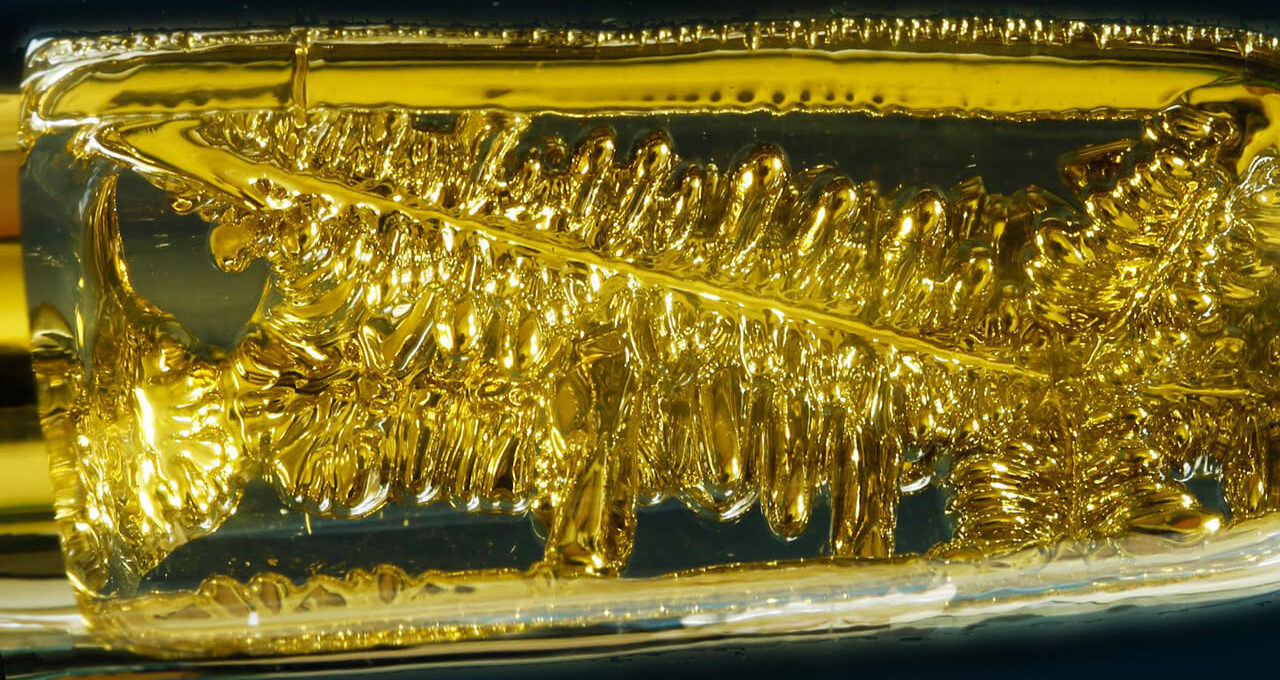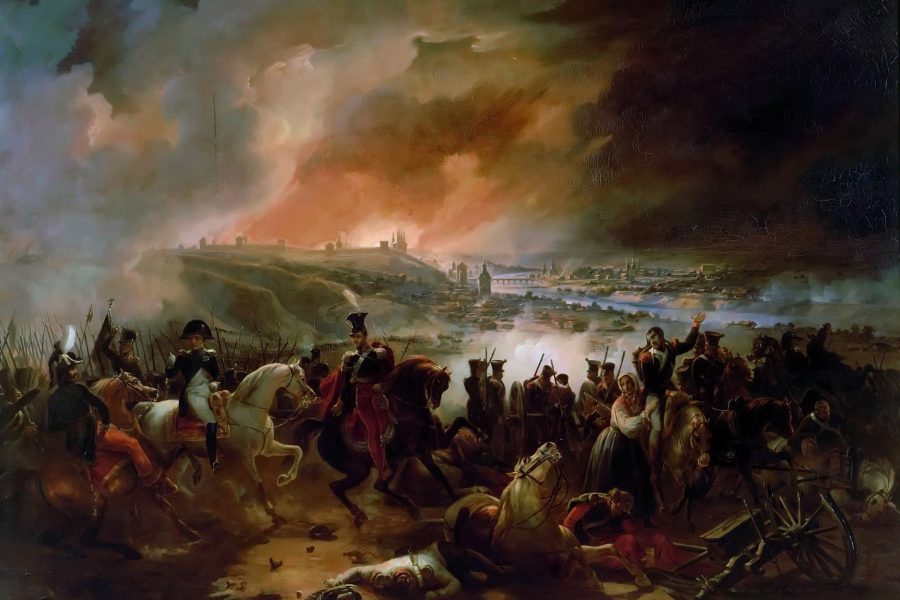The most active metals are the elements of groups I and II, which are on the left side of the periodic table. A metal is considered active when it reacts strongly and quickly with other elements. The reactivity of a metal increases as we move from the top to the bottom of the periodic table.
The exception is hydrogen, which is not considered a metal and is located in the upper left corner of Mendeleev's periodic table of chemical elements.
The most active metals in the world
 According to the reactivity of the metallic elements listed in the periodic table of chemical elements, they are divided into three groups:
According to the reactivity of the metallic elements listed in the periodic table of chemical elements, they are divided into three groups:
- Active metals.
- Medium activity metals.
- Low-activity metals.
The most active metals on Earth are lithium, cesium and francium.
Cesium is the most reactive of the non-radioactive elements. It is a rare, silvery-yellow, shiny metal with an atomic number (the number of protons in the nucleus) of 55. It is a very soft element that will melt in your hands—if it doesn’t explode first, as it reacts strongly to moisture.

There is also a very radioactive element, francium, which may be more active than cesium. Or it may not be, we will probably never know, because francium is not only extremely radioactive, it is also an extremely rare metal.
The last of the three most active metals, lithium, has an interesting property. It gives a crimson color to tongues of flame.
Here is a video demonstration of the activity of lithium, sodium, potassium, rubidium and cesium.
What is cesium
Cesium is an alkali metal. They are very reactive and do not occur freely in nature. These metals are also very ductile and are good thermal and electrical conductors.
Cesium was the first element that could be detected with a spectroscope. It was discovered in 1860 by German chemists Robert Bunsen and Gustav Kirchhoff while analyzing the spectrum of mineral water from the Bad Dürkheim spring.
Cesium occurs naturally in the minerals pollucite and lepidolite. It is also found in many aluminosilicates such as beryl, petalite, and carnallite. The richest known cesium deposit is in Canada, on the shores of Bernic Lake. It contains about 70% of all the earth's reserves. Curiously, this lake is the site of an annual Cesium Festival (February 24), when tons of the stuff are burned in snow and other cesium madness prevails.
Cesium is also a byproduct of nuclear fission in reactors.
Properties of cesium
 Although cesium is not the heaviest metal in the world, it is the most active and has a number of unique properties:
Although cesium is not the heaviest metal in the world, it is the most active and has a number of unique properties:
- It burns spontaneously in air and explodes instantly upon contact with water or moisture in any form, even ice down to -116 C.
- It burns with a brilliant blue flame. To the uninitiated the flame appears purple rather than blue, but with sufficient meditation, study of chemistry, and blissful hours spent in awe of how cesium burns, the true blue nature of its flame is revealed.
- The name "caesium" comes from the two bright blue lines in its emission spectrum. Translated from Latin, "caesius" means "sky blue".
- Its hydroxide (liquid molten state) is capable of eating through flesh, glass and many other substances. Only the metal rhodium and a number of its alloys are capable of resisting the melt of cesium hydroxide.
- Cesium iodide and bromide are used as central components in the production of precision optics, including night vision scopes, goggles, and binoculars. Cesium has also been used experimentally in ion propulsion systems for spacecraft, due to its low ionization potential.
- Cesium is used to create the most accurate atomic clocks. Even the best wristwatches in the world can lose several seconds or even a minute. But cesium-based atomic clocks lose only one second every five billion years.
- Natural cesium consists of one stable isotope, Cs 133. There are 30 other known radioactive isotopes, filling the range from Cs 114 to Cs 145. Cesium-137 (aka radiocesium) is one of the most biologically dangerous components of radioactive waste and nuclear fallout. It accumulates in living organisms and even in fungi, and its highest levels are found in reindeer and waterfowl in North America.
Humans and animals are constantly exposed to minute amounts of cesium through eating, breathing, and drinking. Although it is unlikely that we will become ill from cesium alone, long-term exposure can lead to adverse health effects, including nausea, vomiting, bleeding, and cell damage.
Cesium and cancer treatment

Paracelsus also claimed that everything is poison, and everything is medicine. It's only a matter of dosage. And when it comes to cesium, Paracelsus' words are absolutely true.
Cesium is currently being studied for its effectiveness in treating several forms of cancer, including brain tumors. Cesium-131, a radioactive isotope of cesium, is placed in a brachytherapy capsule (the "seed") along with another radioactive isotope (iodine-125).
According to the American Society of Brachytherapy, a brachytherapy capsule is a radioactive "pod" that is placed directly into cancerous tissue. These seeds are effective against several forms of cancer, including prostate, cervical, and endometrial cancer.
In one study, a group of 24 patients with brain tumors had cesium-131 brachytherapy seeds implanted into the tumors. There were minimal side effects, but overall, patients tolerated this form of treatment well.
The idea of using cesium-131 brachytherapy seeds as a cancer treatment dates back to the 1960s and was described in a study published in the journal Radiology. A study published in the journal Medical Physics in 2009 discussed the use of cesium-131 seeds to treat prostate cancer with positive results.
More research is needed before cesium therapy can be firmly established in medicine. However, so far, research shows that the use of cesium-131 to treat cancer tumors through brachytherapy is promising.
Comparison of cesium and france

Like cesium, francium (Fr) is an alkali metal (only radioactive) and has extremely high chemical activity.
- The density of francium is 1.87 grams per cubic centimeter, which is comparable to the density of cesium - 1.879 grams per cubic centimeter.
- Cesium and francium are two of four metals that are liquid at room temperature, a property shared by mercury and gallium.
- The interaction of cesium with water is quite spectacular - with an explosion, the formation of hydroxide CsOH and hydrogen H2. Francium and water do not particularly "like" each other, and when they interact, the strongest alkali is formed - francium hydroxide.
- Like cesium, francium accumulates in living organisms. Therefore, isotopes of this metal have found their application in medicine, for cancer diagnostics and various biological studies.
- But in terms of prevalence, cesium is far ahead of francium. About 20 tons of enriched cesium ore are mined in the world every year. According to PeriodicTable, cesium is the 50th most common element in the earth's crust. France accounts for about 340 grams in the entire earth's crust.
That is, in terms of their properties, the two most active metals on the planet are very similar.
Comparisons of Cesium and Lithium

Lithium is one of the top three most reactive metals on the planet. It is a key component in the batteries that power smartphones, laptops, and electric cars. More than half of the world's lithium supplies come from the "lithium triangle" of Bolivia, Chile, and Argentina. The largest source of lithium from salt is Chile's Atacama Desert.
- Like cesium, lithium is an alkali metal. And like cesium, it occurs in nature only as compounds. However, traces of lithium are found in almost all igneous rocks and in many mineral springs. It was one of the three elements created by the Big Bang, along with hydrogen and helium.
- There is little lithium and cesium in the earth's crust - 21 g/t and 3.7 g/t, respectively.
- If cesium ignites in the air, interacting with oxygen, then lithium can even be stored in the open air for some time. Due to such "tolerance", lithium is the only representative of alkali metals that does not require storage in kerosene. It can also transmit a "fiery greeting" when interacting with oxygen, but only at high temperatures.
- Lithium is the least dense metal (0.533 g/cm3). Cesium has a much higher density of 1.879 grams per cubic centimeter. Lithium's lightness means it can store energy without adding weight to devices.
- But in terms of low melting point, lithium gives cesium a run for its money. Its melting point is 180.5 degrees Celsius. And cesium melts at 28.4 degrees Celsius.
- But lithium boils quickly - at 134 degrees, but bringing cesium to a boil is not easy, a temperature of 678 degrees is required.
- Both lithium and cesium are easily cut with a regular knife.














Оставить Комментарий